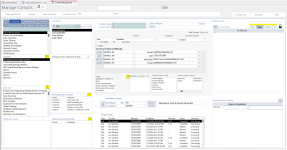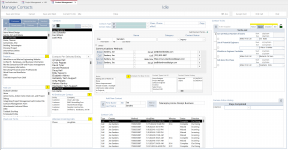TL;DR I avoid dense to favor workflow. Popups are no problem here.
We are at the end of the year 2023 and ALL of my users use smartphones. Therefore, all of my users are more familiar with the web standard than the windows forms standard.
When I open a smartphone app, what I see is simplicity and lots of feedback, so I apply those two concepts into my designs. In doing that, I don't have to provide training to my users, because it's intuitive for them. They often say "Oh, it's like whatsapp", "Oh, like sending an email, right?", "This looks like the app of my bank", etc.
Things that made sense in 1995 don't make sense in 2023. My users obviously don't want to use paper for data entry, so I design forms that take advantage of the computer medium, instead of making them look like paper forms. They're no longer used to paper forms anyway, so I won't bring back ancient solutions when there are objectively better options. So, instead of dense forms, I design
workflows.
If you want to know what I mean, I will share with you my inspiration app, this entire site is amazingly well detailed and it will surely give you some great inspiration:
https://experience.sap.com/fiori-design-web/when-to-use-which-floorplan/
Here's a few screenshots:
View attachment 111470 View attachment 111471 View attachment 111472
Also look at the many other design principles used in that app:
https://experience.sap.com/fiori-design-web/action-placement/
View attachment 111473View attachment 111474
Or this, which is a workflow I love applying because my users understand it so easily:
https://experience.sap.com/fiori-design-web/navigation/
View attachment 111475
Navigate that site, it's incredible. I have another one, from a UI framework I use for web apps, here's a few links and screenshots:
https://ant.design/docs/spec/navigation
View attachment 111477
https://ant.design/docs/spec/proximity
View attachment 111476
Make sure to browse the other categories, they give amazing insights about form design.
Most of these things can be applied to Access.



